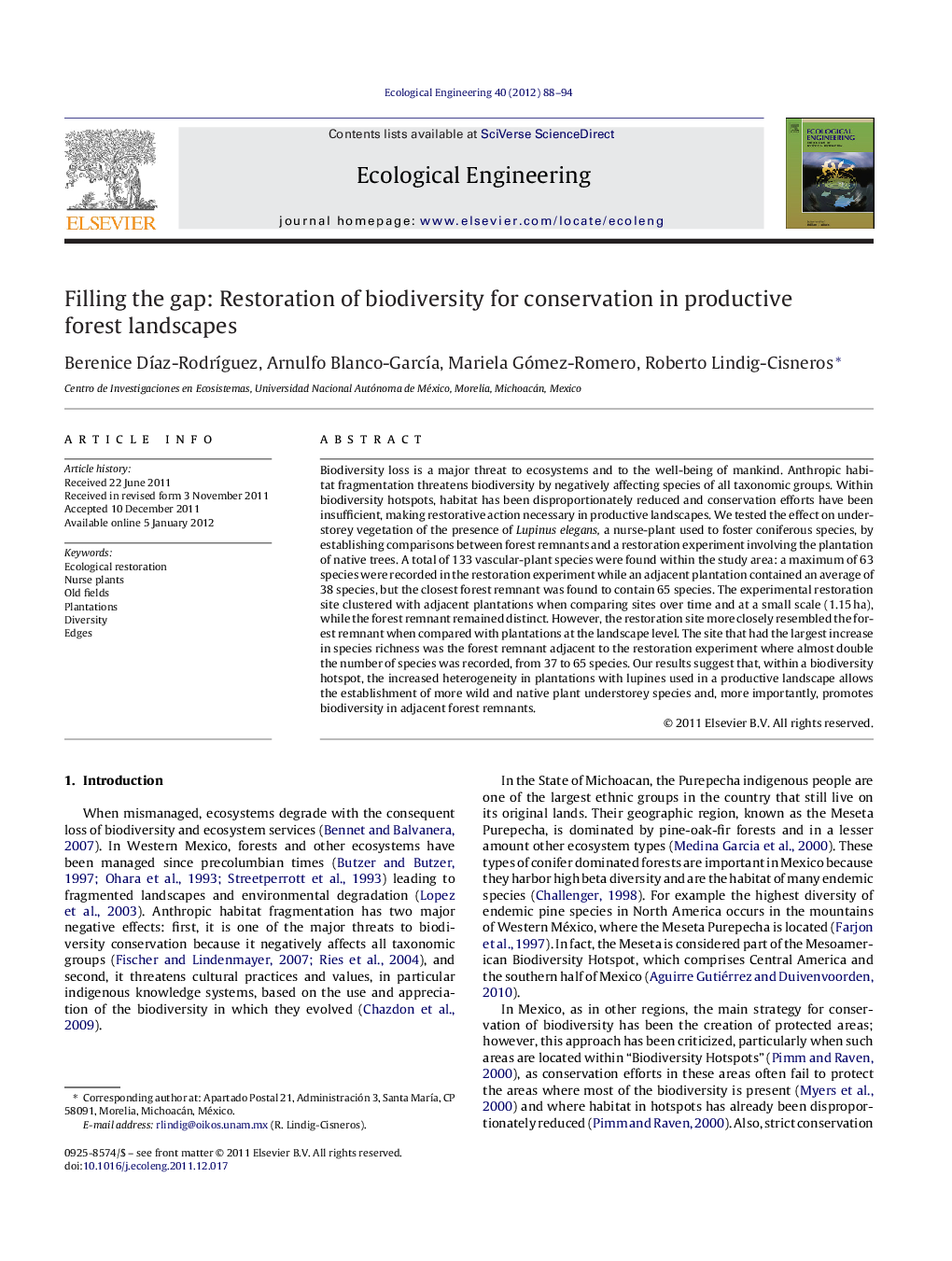| Article ID | Journal | Published Year | Pages | File Type |
|---|---|---|---|---|
| 4389952 | Ecological Engineering | 2012 | 7 Pages |
Biodiversity loss is a major threat to ecosystems and to the well-being of mankind. Anthropic habitat fragmentation threatens biodiversity by negatively affecting species of all taxonomic groups. Within biodiversity hotspots, habitat has been disproportionately reduced and conservation efforts have been insufficient, making restorative action necessary in productive landscapes. We tested the effect on understorey vegetation of the presence of Lupinus elegans, a nurse-plant used to foster coniferous species, by establishing comparisons between forest remnants and a restoration experiment involving the plantation of native trees. A total of 133 vascular-plant species were found within the study area: a maximum of 63 species were recorded in the restoration experiment while an adjacent plantation contained an average of 38 species, but the closest forest remnant was found to contain 65 species. The experimental restoration site clustered with adjacent plantations when comparing sites over time and at a small scale (1.15 ha), while the forest remnant remained distinct. However, the restoration site more closely resembled the forest remnant when compared with plantations at the landscape level. The site that had the largest increase in species richness was the forest remnant adjacent to the restoration experiment where almost double the number of species was recorded, from 37 to 65 species. Our results suggest that, within a biodiversity hotspot, the increased heterogeneity in plantations with lupines used in a productive landscape allows the establishment of more wild and native plant understorey species and, more importantly, promotes biodiversity in adjacent forest remnants.
